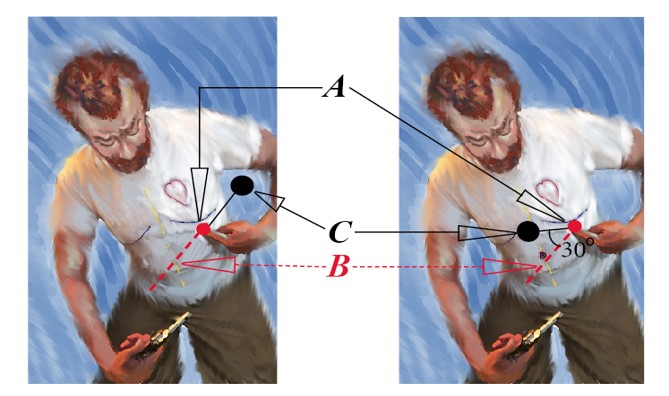forensics
forensics research
purpose of the forensics study
The historical records regarding the death of Vincent van Gogh do not note any type of black powder burns. Dr. Arenberg and his team agree that this is because the gun was fired from a distance, leading to the conclusion that Vincent was murdered and did not commit suicide.

what do we know?
While little is known about the death of Vincent van Gogh, alot of his life was well documented. Vincent, his family, and friends wrote 100s of letters back and forth between each other. These letters have been well catalogued and are available free to view on various websites. There are also interviews and book from people who where close to Vincent during his death. These tend to best source of information regarding the death of Vincent, but they can vary in reliability as most of these interviews took place decades after Vincent’s death. Still, some very interesting tidbits of information can be drawn from these interviews such as; Marguerite Gachet, the daughter of van Gogh’s friend Dr. Gachet, may have had a secret love affair with Vincent.
So What Does All of This Have to do With Vincent's Death?
The main problem that many scholars researching the subject have noted is the way Vincent was died doesn’t seem to make a lot of sense.
First off, Vincent’s wound was located ….. Those present said the bullet went inward toward the body and came to rest near the midline. This angle seems impossible to accomplish.

The only thing to assume at this point is if he shot himself, he had to do it with his left hand. Of course while this is a much more feasible explanation of how he shot himself, it is still a very bizarre way to commit suicide. It assumes he shot himself ….in the stomach ….sideways ….when nobody was around ….then walked miles back to the inn where he was staying ….simply because he was crazy. And most people assume this is what happened. However, the real facts are fuzzy at best.
Facts…
- A definite crime scene has never been located
- No witnesses saw Van Gogh get shot and no one heard a gunshot
- No one saw him walking back to the Ravoux Inn from wherever he was mortally injured
- No weapon was found at the time, and no bullet ever existed in evidence
- No doctor or police reports survived
- No autopsy was performed
The description of the entry wound was only written down 36 years after Vincent’s burial, by the doctor’s son. So the only thing for certain about Vincent’s death is that we really don’t know anything. This of course means it’s possible that someone else shot Vincent.

so now what? ...forensics
While the facts didn’t seem to show suicide or murder definitively, I still believed in my gut that the beloved van Gogh didn’t shoot himself.
One interesting thing that I noted was how black powder bullets from the period in which van Gogh died spray out of the end of the barrel like a sedaline torch leaving a nasty burn on whatever it was close enough to contact.

I decided to set up an experiment. So I purchased an authentic original model Lefauchex revolver, contacted a local gun range, who where happy to provide me time alone to test fire the gun. I fired the revolver at FBI grade ballistc gel from different ranges. Results: the closer I was to the target the greater the burn on the target, and the further I got, up to three feet, there was little to no burn mark.


Test firing Lefauchex revolver from point blank. the cotton cloth catches on fire due to the close range.
Dr. Arenberg fires the gun from approximately 6 inches away. The black powder shoots out of the muzzle like a cloud of fire.
Here the gun is fired from a little over a foot away. The fireball dissipates very quickly into the air, leaving smaller traces of black powder on the target.
Finnally, the gun is fired from over 2 feet away. Hardly any black powder reaches the target from this distance.
so what does this mean?
According to the only wound description available, there were no reported burn marks “powder burns” on Vincent. This means the gun had to have been fired from a greater distance than his own left arm could effectively reach. This would lead me to the conclusion that Vincent van Gogh was murdered.
peer-reviewed forensic analysis
Dr. Irv Arenberg, Dr. Vincent J.M. Di Maio, and Dr. Michael M. Baden have released a peered reviewed article on “A Reevaluation of the Death of Vincent van Gogh, Suicide or Murder? The Need for a Definitive Autopsy”.

The Speculative Knife Theory
As witnesses of Vincent’s wound described it simply as a small hole with purple edges, Dr. Arenberg has also postulated that Vincent’s lethal wound could have been caused by a knife, and not a bullet at all. The fact that there are no witnesses that ever heard a gunshot reinforces this as a feasible alternative theory.
